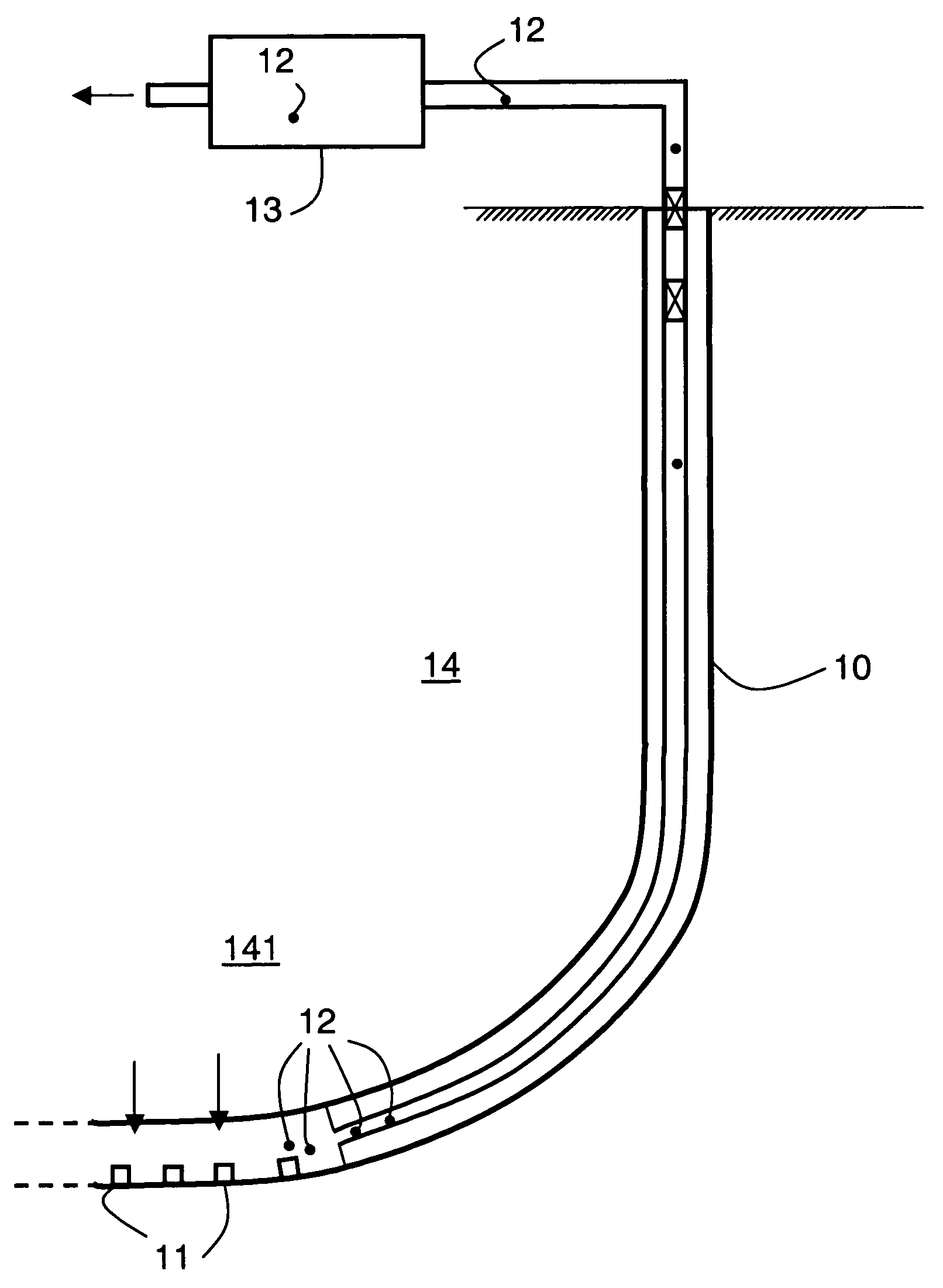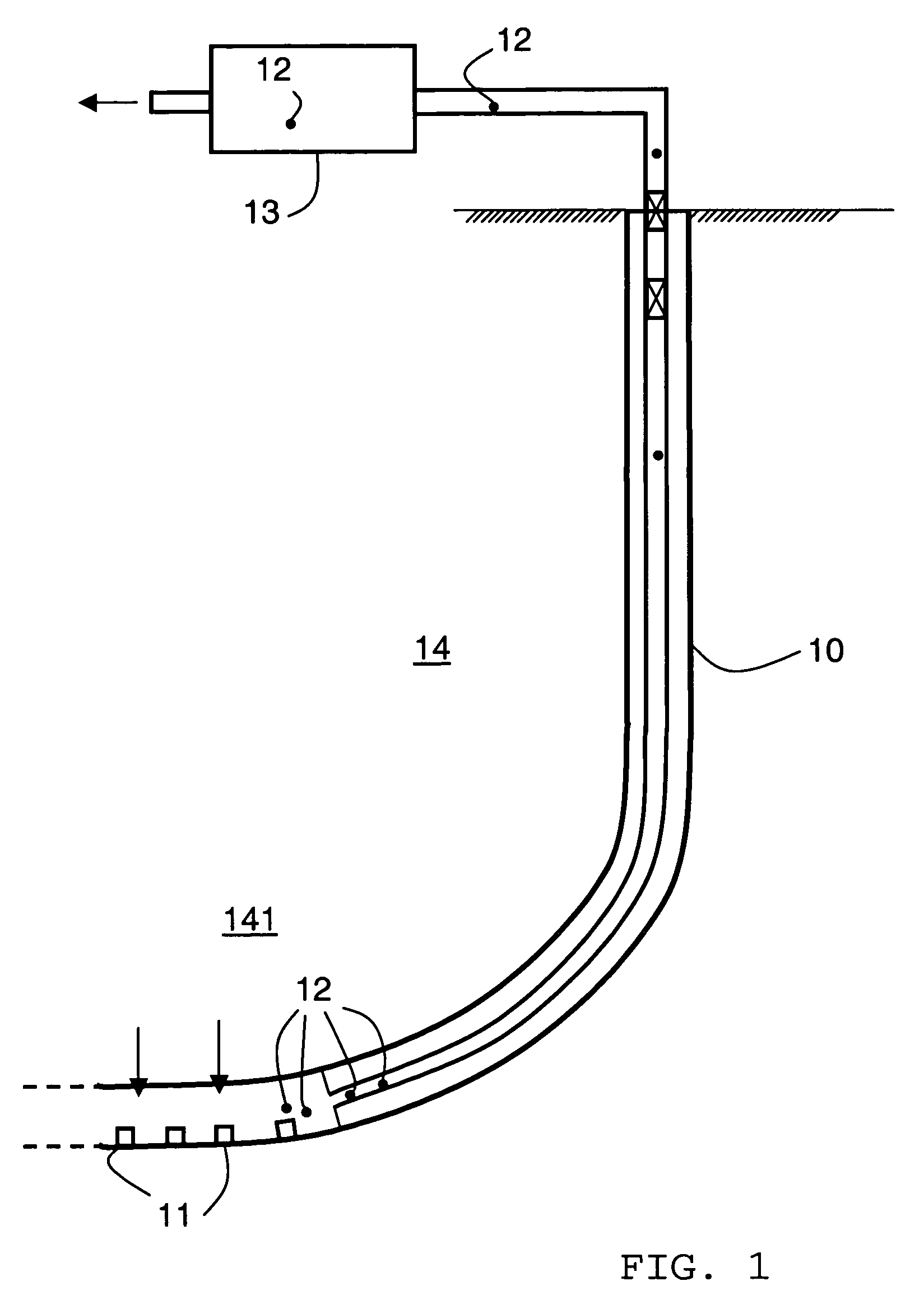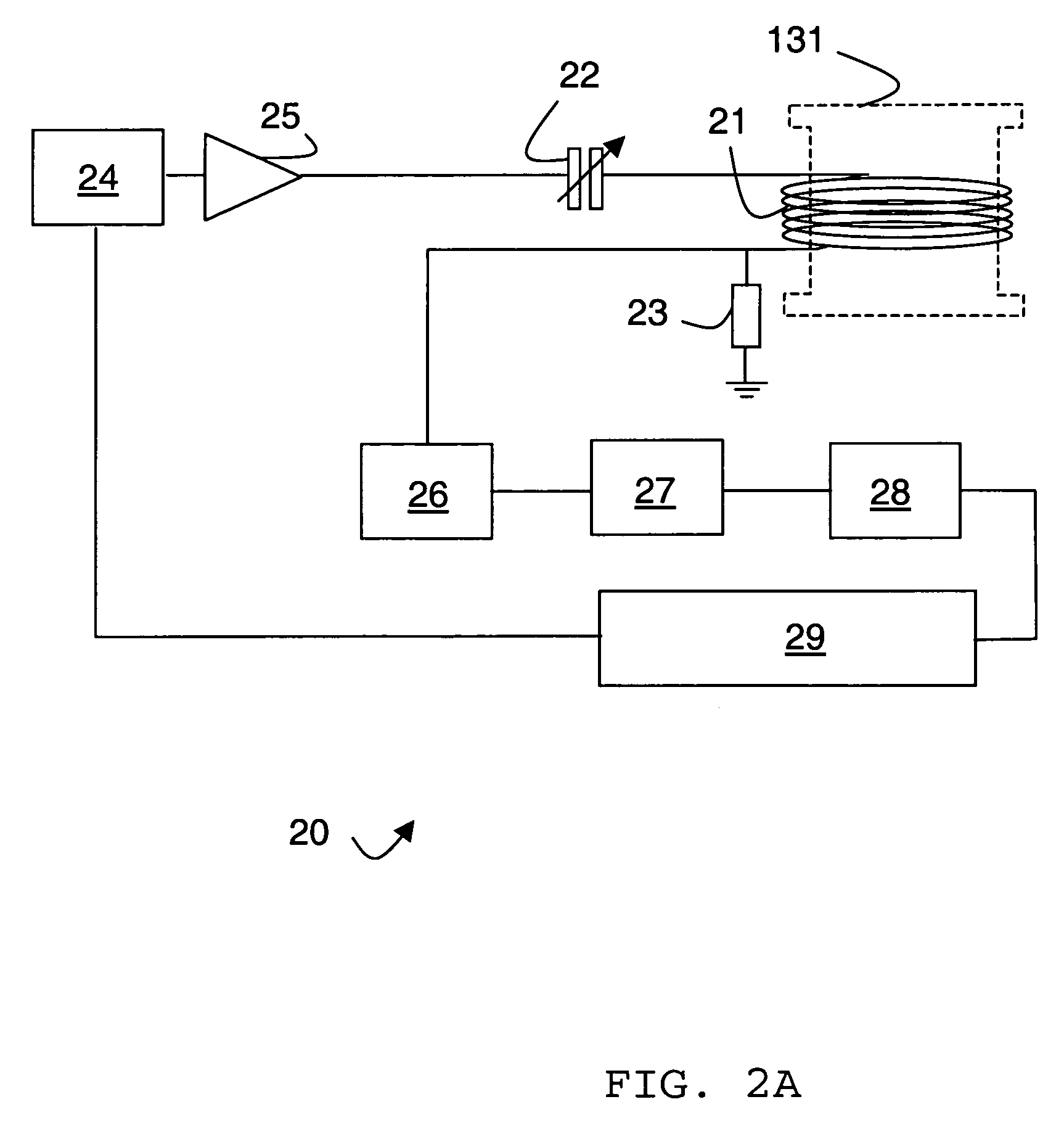Radio frequency tags for turbulent flows
a radio frequency tag and turbulent flow technology, applied in the field of radio frequency tags for turbulent flows, can solve the problems of not coupling to the field produced by the reader antenna, losing contact with the reader, and frequency attenuation in conductive fluids
- Summary
- Abstract
- Description
- Claims
- Application Information
AI Technical Summary
Benefits of technology
Problems solved by technology
Method used
Image
Examples
examples
[0036]In FIG. 1 there is shown a system for communicating information from downhole to the surface. The system generally comprises one or more downhole sensors and associated release mechanisms 11, floating passive autonomous devices or vessels 12, and surface detection system 13. There are four sensor / release mechanisms 11 positioned in the lower end of well 10. Well 10 is producing hydrocarbons from reservoir region 141 in the earth 14. The vessels 12 are constructed to have a high probability of surviving downhole pressures and temperatures, and will be carried to the surface by the flowing liquids in the well 10. Surface detection system 13 detects and / or recovers vessels and interprets the signals conveyed by vessels 12.
[0037]Reader circuit 20 of surface detection system 13 is shown in greater detail in FIG. 2A. The reader circuit includes reader coil 21 of 170 mm length and 90 mm diameter. It is wound with approximately 440 turns of 0.3 mm insulated copper wire mounted onto a ...
PUM
 Login to View More
Login to View More Abstract
Description
Claims
Application Information
 Login to View More
Login to View More - R&D
- Intellectual Property
- Life Sciences
- Materials
- Tech Scout
- Unparalleled Data Quality
- Higher Quality Content
- 60% Fewer Hallucinations
Browse by: Latest US Patents, China's latest patents, Technical Efficacy Thesaurus, Application Domain, Technology Topic, Popular Technical Reports.
© 2025 PatSnap. All rights reserved.Legal|Privacy policy|Modern Slavery Act Transparency Statement|Sitemap|About US| Contact US: help@patsnap.com



